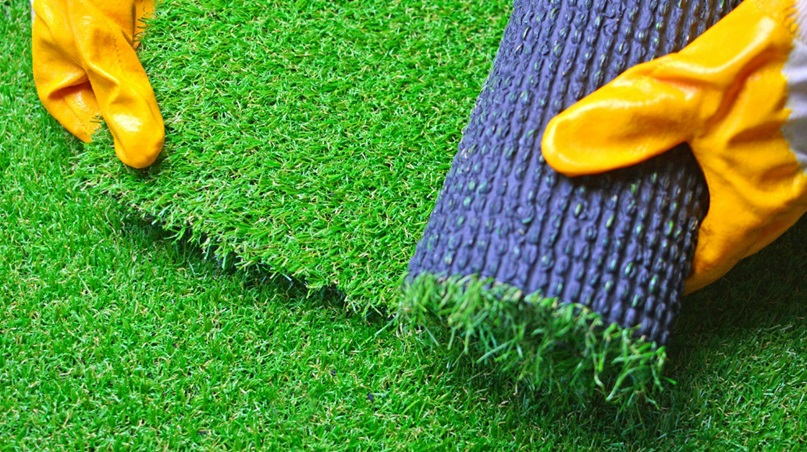
For those living in areas prone to allergens or dealing with severe allergies, maintaining a lush and inviting lawn can be tricky. Traditional grass lawns often exacerbate allergy symptoms due to pollen, mold, and maintenance requirements. For those interested in making the switch, artificial turf in Cumming provides a tailored solution to meet both aesthetic and practical needs. Artificial turf not only minimizes allergy triggers but also offers a low-maintenance solution without sacrificing aesthetics.
Reducing Exposure to Pollen
One of the main contributors to outdoor allergies is grass pollen. Natural grass produces pollen during its growth cycle, particularly in warmer months. This pollen can trigger allergic reactions in people sensitive to it, causing sneezing, itchy eyes, and even throat irritation. Artificial turf eliminates the source of grass pollen, providing a hypoallergenic alternative.
Additionally, natural grass often collects pollen from nearby plants and trees, further increasing allergen exposure. Artificial turf, with its synthetic composition, does not act as a host for these elements, creating a cleaner environment for allergy sufferers to enjoy.
Limiting Mold and Fungi Growth
Natural grass lawns, especially in humid climates, are prone to mold and fungi growth. Damp grass, soil, and organic debris create ideal conditions for these allergens to thrive. When airborne, mold spores can aggravate respiratory symptoms, skin irritation, and asthma.
Since artificial turf doesn’t rely on soil to grow, it significantly reduces the chances of mold and fungi forming. The material used for artificial turf drains water efficiently, preventing moisture buildup. Regular rinsing and periodic maintenance further ensure that allergens such as mold do not accumulate, providing a safer outdoor space.
Easier Maintenance to Avoid Triggers
Maintaining a natural grass lawn often involves mowing, fertilizing, and other labor-intensive activities. These disturb the grass and release pollen into the air, increasing allergens in your immediate surroundings. On the other hand, artificial turf requires very minimal upkeep. Simple brushing, rinsing, and occasional cleaning ensure its longevity without stirring up allergens.
Additionally, natural lawns often need pesticides and fertilizers to stay healthy, many of which can irritate the skin or respiratory system. With artificial turf, you avoid the need for chemicals altogether, making it a healthier choice for families, pets, and the environment. Homeowners new to synthetic lawns can learn about the difference between turf and artificial grass to better understand its benefits.
Preventing Weed Allergies
Weeds, such as ragweed, are a hidden culprit in exacerbating allergies in natural grass lawns. They frequently grow alongside grass, releasing their own pollen into the air. Controlling weeds can be challenging and typically requires constant monitoring and treatment.
Artificial turf removes the issue at its root—literally. With a synthetic lawn, the structure prevents weed growth, minimizing both maintenance and the presence of allergy-inducing plants in your yard. This makes artificial turf an increasingly practical choice for those who want an allergen-free space.
Enhancing Your Environment
While artificial turf’s contribution to allergy relief is undeniable, its benefits extend beyond health. Many homeowners choose artificial turf because of its ability to increase curb appeal and property value. Installing synthetic lawns can significantly impact outdoor aesthetics while reducing long-term maintenance costs. Additionally, studies show that artificial turf can add value to your property, which is a factor many consider, especially if planning to sell in the future. A clean, allergy-friendly lawn is not only practical but also a worthwhile investment.
Sustainability and Its Role
Artificial turf is also a more sustainable alternative to natural grass in areas with limited water availability. Traditional grass lawns require consistent watering, particularly during dry seasons, contributing to high water consumption. Synthetic turf eliminates this need, conserving resources while maintaining an evergreen look. Beyond allergy control, these environmental benefits make artificial turf a sustainable choice for modern homeowners.
Conclusion
Artificial turf offers a safe and effective alternative for allergy sufferers compared to natural grass. Eliminating allergens like pollen, mold, and weeds creates a cleaner, irritant-free outdoor environment. With minimal maintenance needs and no chemical treatments required, artificial turf further ensures a healthier living space for families and pets. Choose artificial turf and experience the perfect combination of health-conscious design and low-maintenance convenience.





